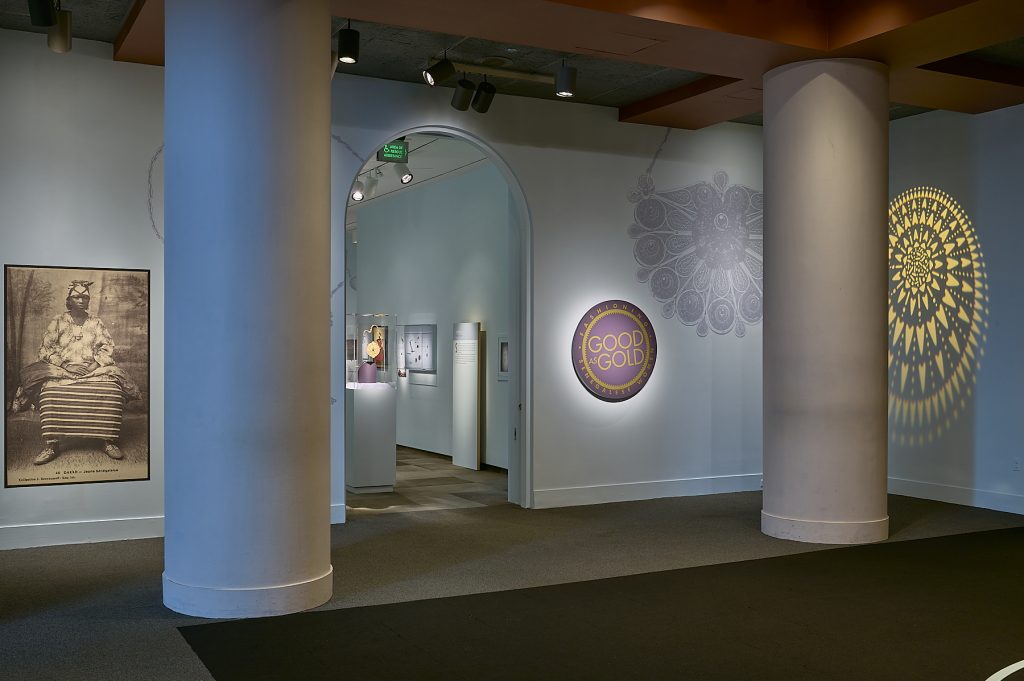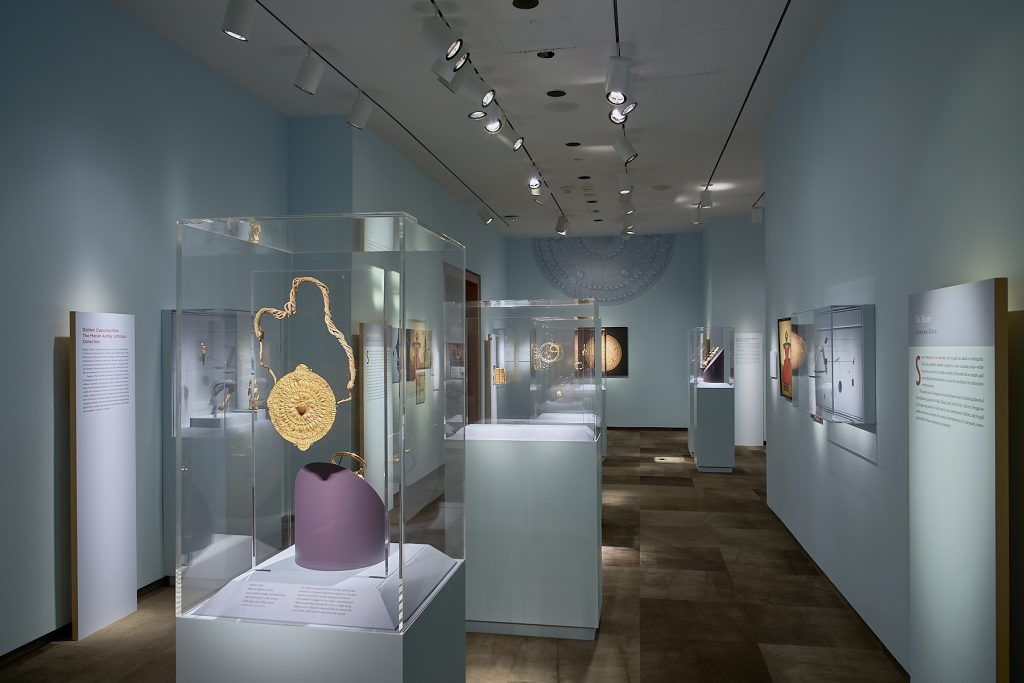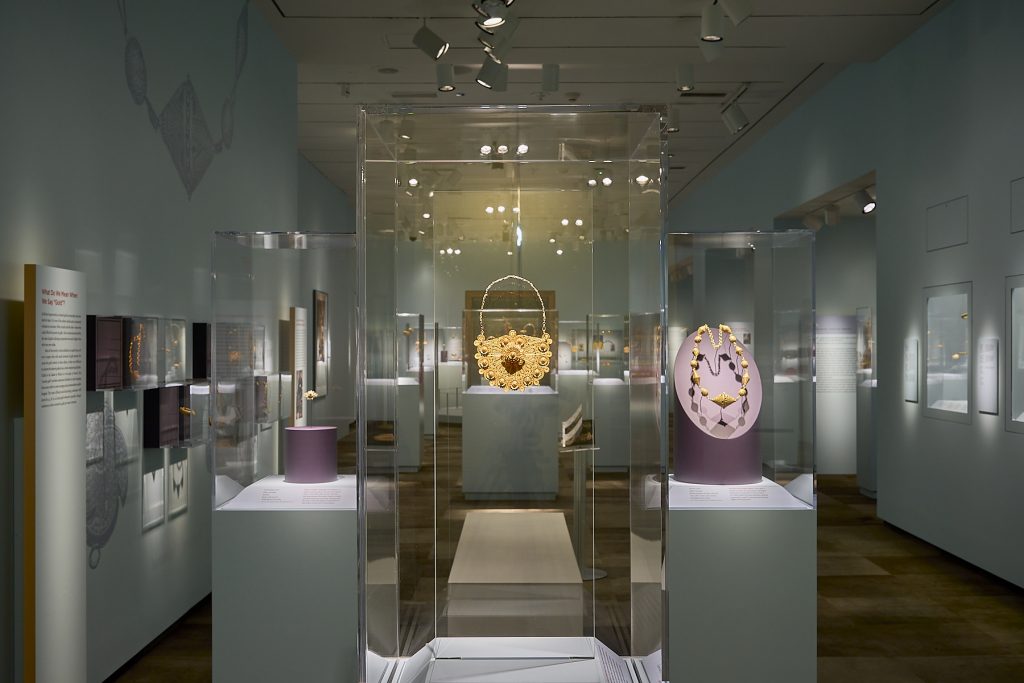Jewelry acts. For urban women in Senegal, jewelry is more than a showy trinket or decoration. It has long been a means for fashioning a cosmopolitan identity of power and prestige. Adhering to the Wolof concept and practice of sañse—dressing up, looking and feeling good—a woman in a place like Dakar, for example, selects specific gold jewelry to assemble a carefully tailored, elegant fashion ensemble.
The artworks in Good as Gold can be understood not in the fragmentary state in which we see them here, but as part of a broader constellation of identity, nationhood, politics, wealth, and individual taste. Fundamental to larger social and economic processes that are constantly changing, gold jewelry can reveal deeper histories and practices in Senegalese life, particularly for the women who commission, buy, wear, and remake them. These expressions contribute to an ongoing international dialogue that pulls from deep roots in a rich regional history. Sañse, then, is the whole ensemble—a totality that takes into consideration a network of interconnected meanings and associations, both local and global, that is driven by women.
Good as Gold, grounded in the research and collection of art historian Marian Ashby Johnson, is the first in-depth exhibition to explore the history of Senegal’s gold, from past to present, and the beauty and complexity of the way Senegalese women present themselves.


